Don’t Just Love Your Cold Water Fisheries, Be Good Stewards Also
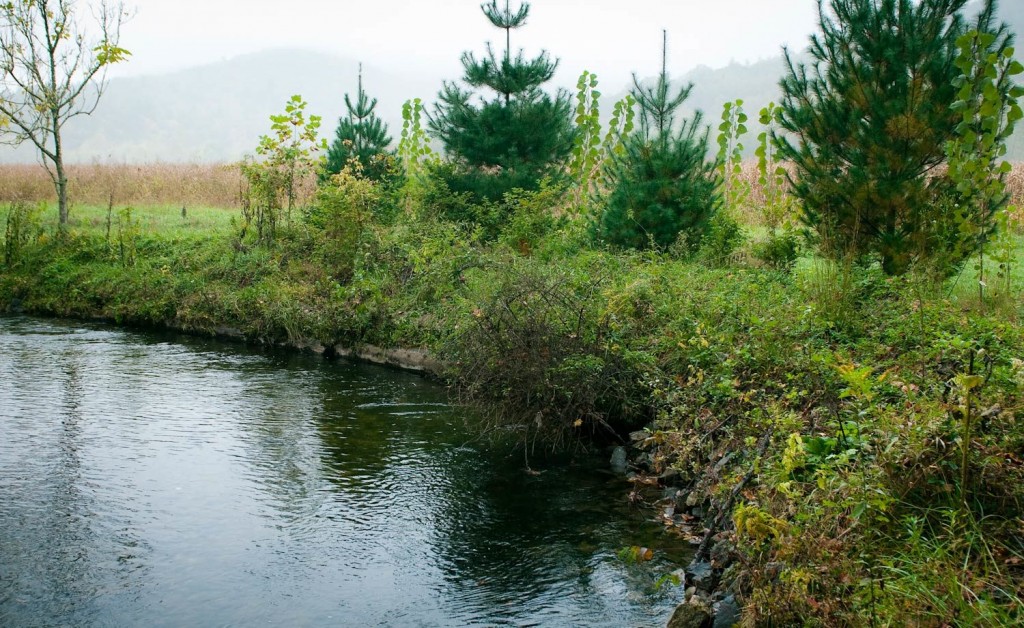
Most fly fisherman are passionate about the protection of their trout and salmon streams.
Promoting catch and release, special regulations and protecting various wild salmonid populations, are among the most common conservation topics being fought for today in the sport of fly fishing. But even as important as all of these topics are, there’s another area of conservation that I feel like is equally important, and is being put on the back burner. Why is it, that we aren’t’ also hearing people talking passionately about the importance of protecting our trout waters tree canopies, stream banks and 50 foot buffers (native shrubs and foliage)? After all, they’re essential elements in the conservation pie, and without them, it’s very difficult for any trout water, regardless of its size, to maintain the proper water quality and habitat that cold-water fish species demand for their suvival.
For example, the past five years, chronic drought conditions, poorly managed river/stream buffer zones and the occasional high wind thunderstorm have uprooted and destroyed an alarming amount of trees and foliage along my trout streams in the Southeastern United States. It hasn’t helped that during this depressing period there’s also been a large amount of our native hemlock forests decimated by the “hemlock woolly adelgid”, a beetle brought over from China and Japan, that sucks the life out of the trees by feeding on their sap. Put all of these negative forces together and they’ve really dealt a punishing blow to the health of the trout water in my area, and their ability to sustain year-round trout fisheries. Stream shade and foliage have been reduced greatly in areas, long stretches of stream banks have become un-stabilized and week, and silt introduction by erosion and runoff have become a serious problem. Water temperatures are reaching levels higher than we’ve ever seen in the past, and natural reproduction of our cold-water species are at an all-time low. The fish haven’t been the only species effected by these environmental cotastrophies. The aquatic insect, amphibian, and crustacean populations have been effected as well, with some species being wiped out almost completely.
Be Good Stewards of your trout water by giving back
Last year, to help combat these issues, I volunteered a day of my time to plant 150 eastern cottonwood trees on a private section of property along a trout stream I regularly guide on. The landowners purchased 8-14″ cottonwood tree cuttings from
Winter Fishing: Keeping Warm and Safe
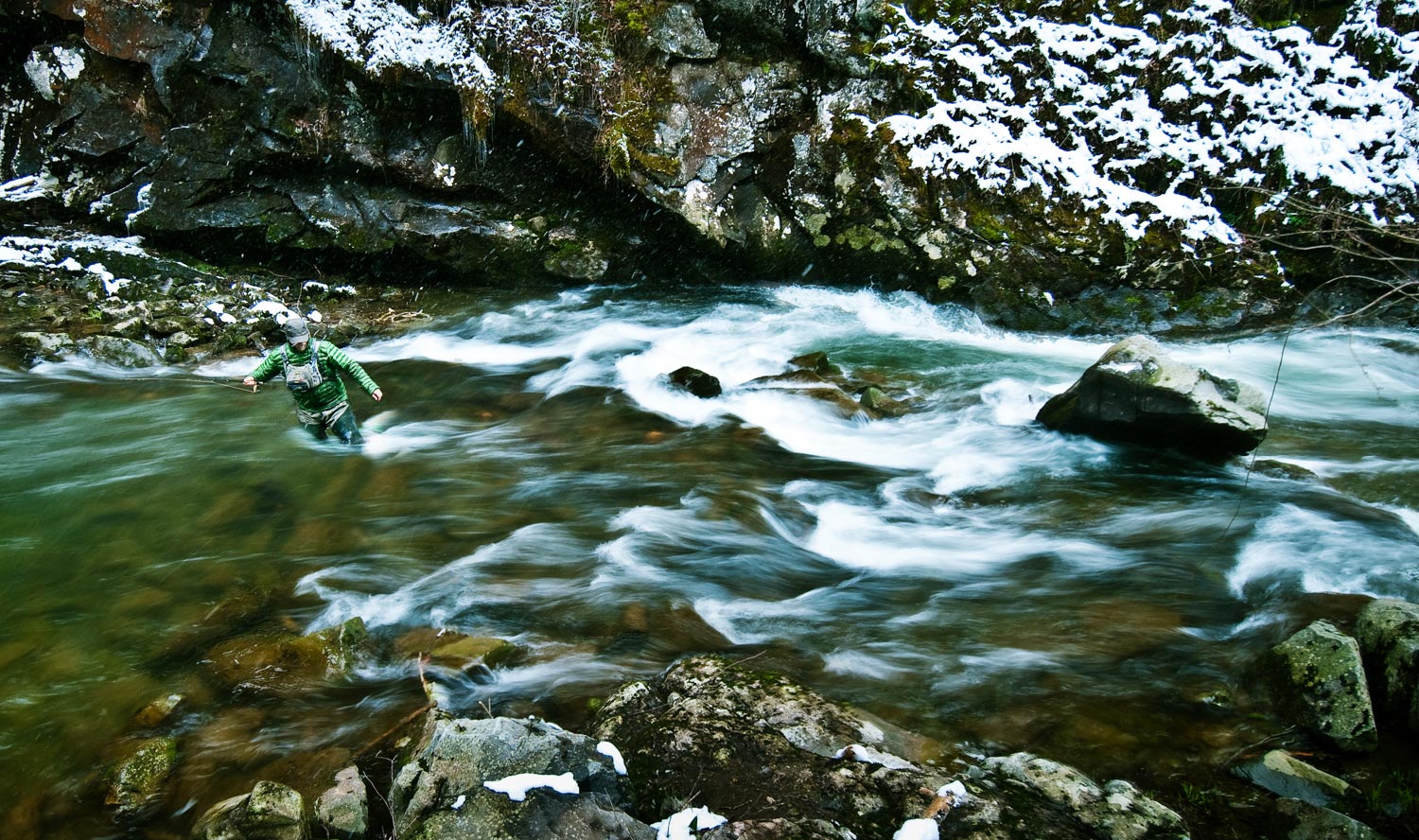
Winter can be a beautiful and exciting time for fly-fishing, but not without its risks.
“How important is it to carry a change of clothes?” a reader asked me the other day. “Well,” I thought, “I guess that depends on whether or not you fall in.” It’s been a long time since I carried a change of clothes for a day of fishing. I’ve spent some pretty soggy and miserable days on the water but I guess I don’t care that much. Still, there are times when being prepared for the worst just makes good common sense. I’ll give you a couple of examples.
Years ago, I was visiting friends in Colorado during February. A friend of a friend had told me about a good piece of water that didn’t get much attention, as it was about a five-mile hike down some railroad tracks to access it. The river was open and I was pretty excited to give it a go. That is, until the weather turned the night before.
The high that day turned out to be ten below. We never see temperatures anywhere close to that here in the south. I don’t mind the cold, but it got me thinking. I don’t know this water at all and there are some pretty tricky wading spots in Colorado. If I took a spill at ten below, five miles from the car or any heat, I’d probably die of hypothermia before I made it. I still fished that day, but I went to the Blue River and fished out back of the outlet mall. I figured in the worst case I could run into the Gap, throw on some dry clothes off the rack and worry about the public indecency charges later. It turned out I didn’t need that option but when I picked my foot up out of the water and watched it freeze before putting back down, I felt like I’d made a good choice.
I couldn’t help but think of a story I read years ago, I think it was in the Drake, about a fellow fishing Clear Creek, in Colorado again, one October. Late in the afternoon, he was hopping across a bolder-strewn bank when a big stone rolled and pinned his leg.
Read More »The Salt Water Quick Cast
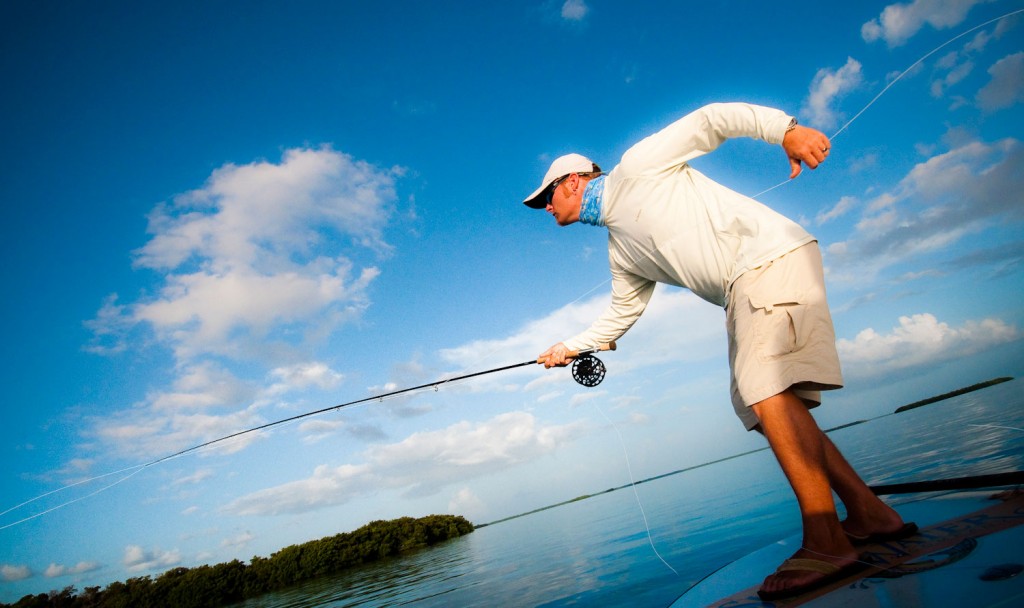
One of the most crucial skills in salt water fly fishing is shooting line.
Everything happens quickly on the flats and the angler who can put is fly on a fish sixty feet from the boat with only two false casts will have a distinct advantage.
It’s important to get the fly to the fish in a hurry but that’s not the whole story. In salt water the most effective presentation is one where the angler shoots line on the delivery. This keeps the fly line from spooking the fish during false casting, which is so important on calm days, and also helps in making a soft presentation. Because the tension from the line hand is released during the delivery the energy of the heavy salt water line dissipates much quicker. No big splash right in front of the fish when the fly lands.
To master the quick cast you will need a few skills in your bag. You must have an efficient double haul to generate the necessary line speed. You also must develop an aggressive back cast so you can shoot line behind you as well. Once you’ve mastered these techniques you’re ready to put your quick cast to work and you’ll catch a lot more salt water fish.
Here’s Capt. Joel Dickey to show you how it’s done.
Read More »Changing Your Mind About The Off Shoulder Spey Cast
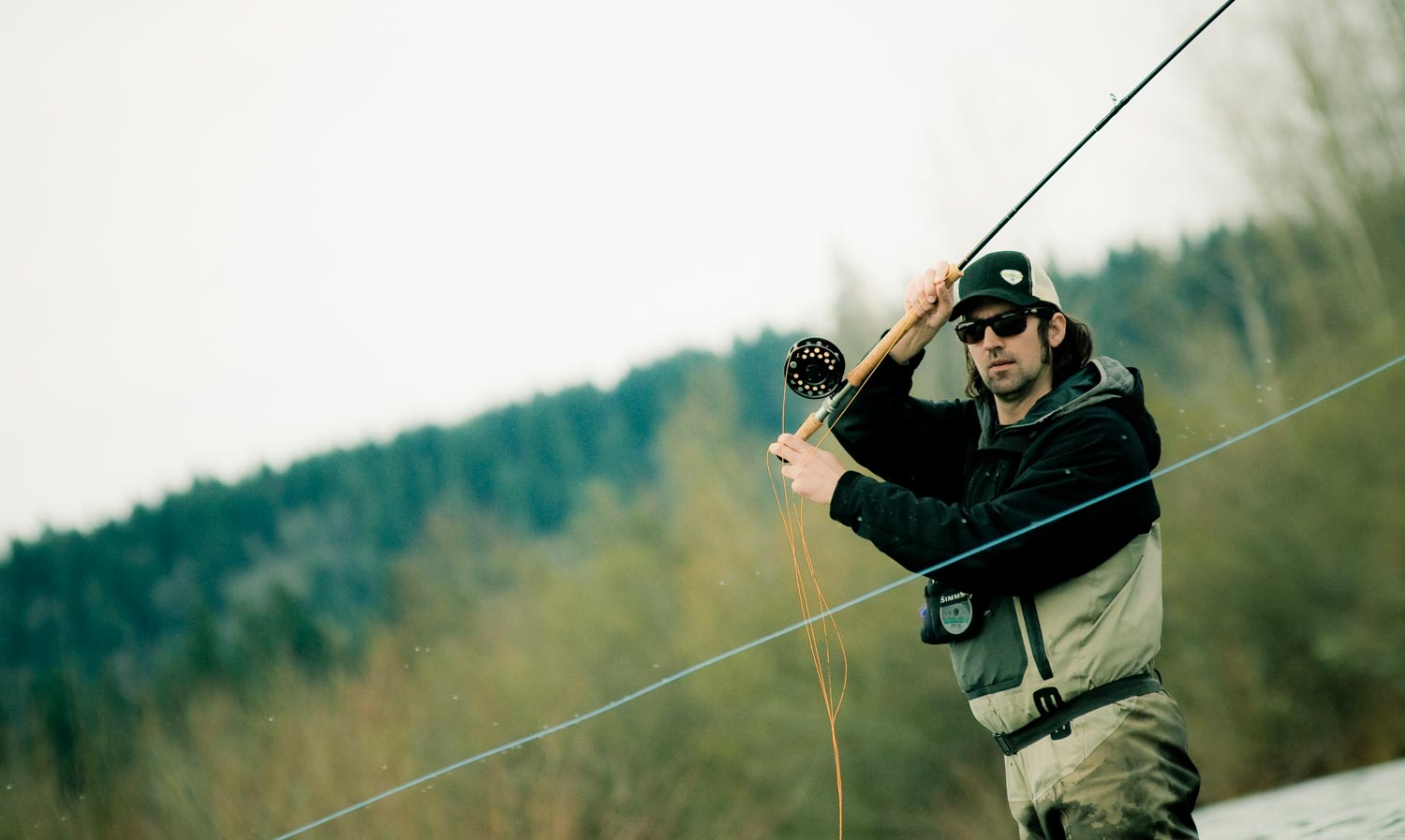
By Louis Cahill
Most anglers, myself included, struggle with making a spey cast off their non-dominant side.
As a right-handed caster, it has always felt unnatural for me to cast off my left shoulder. It’s almost the two-handed equivalent of casting left handed. Because it feels awkward, I’ve never gotten quite as much distance off my left shoulder. I was fishing with guide Barrett Ames, on the Deschutes, recently when he mentioned that his off shoulder cast was his strongest. This peaked my curiosity so I asked for some details. Barrett’s answer was so simple, it made me realize that the problem, like so many, was in my head and not my hands.
“The off shoulder cast just puts my bottom hand in the right position naturally. Everything just lines up and the cast comes off great.”
If this doesn’t immediately make sense to you, pick up a spey rod, or a broom stick for that matter, and walk yourself through it. You’ll see quickly that when you make a cast off your dominate shoulder your bottom hand, which provides the power for the casting stroke, crosses your body, which limits its range of motion. When you cast off of your non-dominant shoulder, your bottom hand lines up perfectly with the elbow and the shoulder, making for a nice full range of motion. The rod naturally falls in very straight plane, which helps your cast land straight.
This simple piece of information made me realize that
Read More »Facebook, A Matter of Life and Death
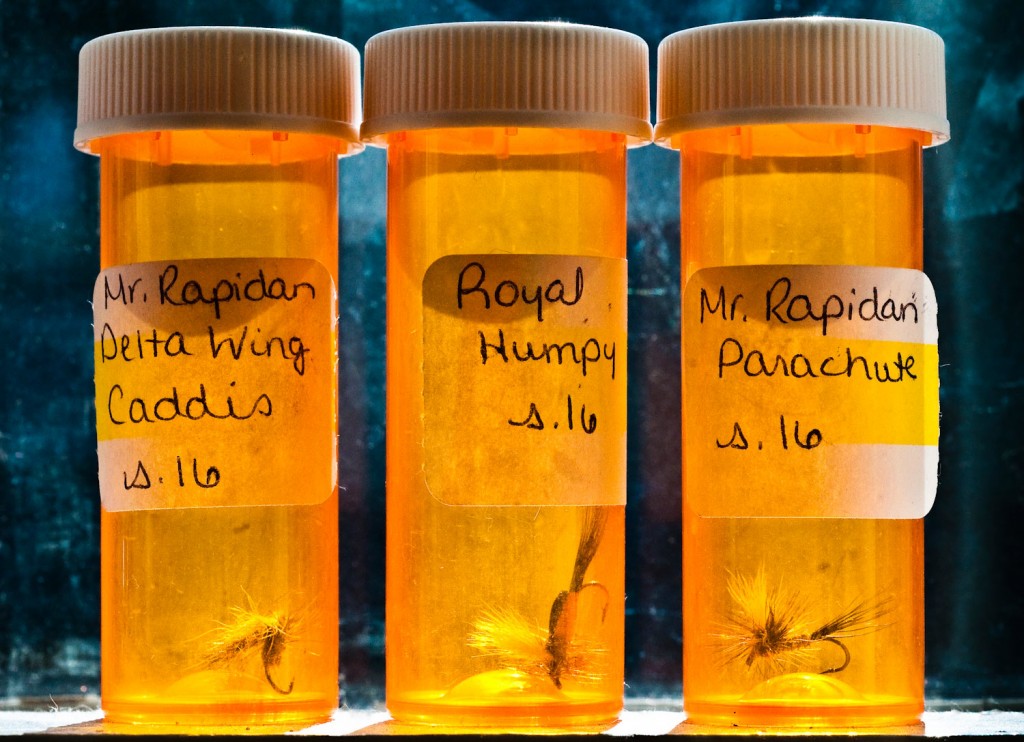
“Gone Fishing! Great way to start the New Year with a little father / son outing.”
That’s what Harry Murray’s Facebook status read on New Year’s day. I was thrilled, and confused. You see, I had heard through the fly fishing grapevine the Harry had passed away. For those of you who do not know, Harry is the Dean of Virginia fly fishing. Although I don’t know Harry personally we have a lot of connections. His fly shop in Edinburg, VA opened in 1962, the year I was born. My grandfather knew Harry and frequented his shop back when it was a pharmacy. (Harry is a pharmacist who ended up in the fly fishing business.) I still have some of Harry’s flies in the old pill bottles he used to pack them in. It was Harry who introduced my good friend Gary Lacey to bamboo rod making. Gary is now one of the best rod makers in the world and taught me to make rods fifteen years or so ago. When I heard that he had passed I couldn’t believe it. I just wasn’t ready for a world without Harry Murray.
It made me think of the morning last year when I answered my phone at eight a.m. To hear my good friend Andrew Bennett, breathless on the other end. He wasn’t really talking and it was clear something was wrong. It spooked me because Andrew is as tough a guy as you are likely to meet. Not easily shaken up. “Are you alright?”
Read More »Hook Sets Are Free
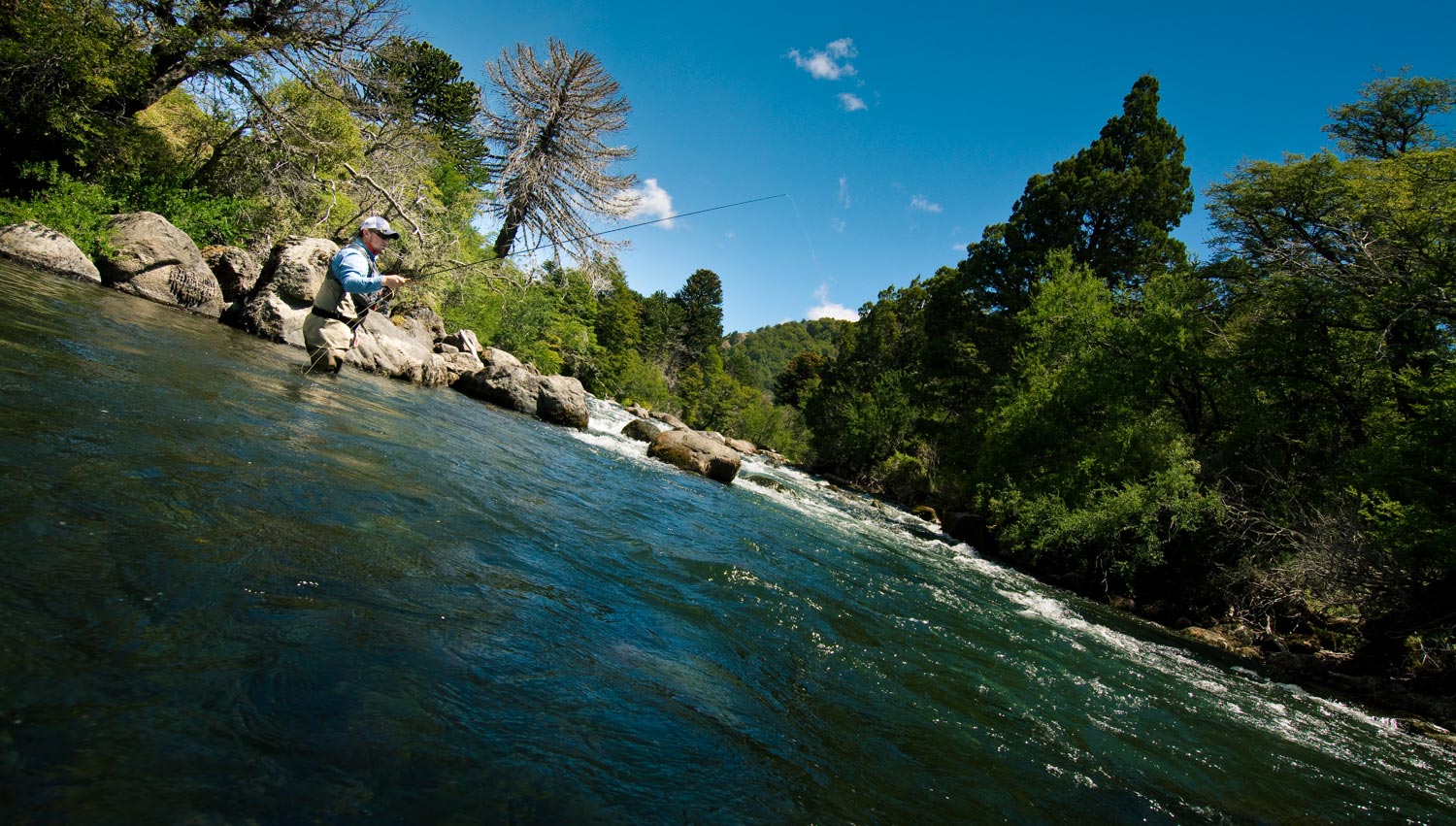
By Justin Pickett
A FLUFFY, WHITE INDICATOR IS DRIFTING MERRILY ALONG THE CURRENT WHEN SUDDENLY IT IS YANKED FROM SITE, ONLY TO EMERGE A SECOND LATER TO CONTINUE ITS VOYAGE DOWNSTREAM BEFORE BEING LIFTED FROM THE WATER’S SURFACE.
Surprised, I look back at my buddy. “What was that?”
To which he replies, “What?”
“Why didn’t you set the hook?”
He came back at me with what many anglers often do in this situation, “I thought it was bottom.”
He THOUGHT he had just been momentarily stuck on the bottom of the streambed, so he didn’t feel the need in ruining his drift by setting the hook, when, in reality, he likely just missed out on hooking up with a trout.
Thinking and knowing are two very different things. Unless you can physically see your fly/flies drifting through the column, you certainly can’t assume that your fly is snagged on the bottom each time your indicator bobs under the water. So what should you do?
Set the hook!
Read More »Tie the Chard Choker Permit Fly
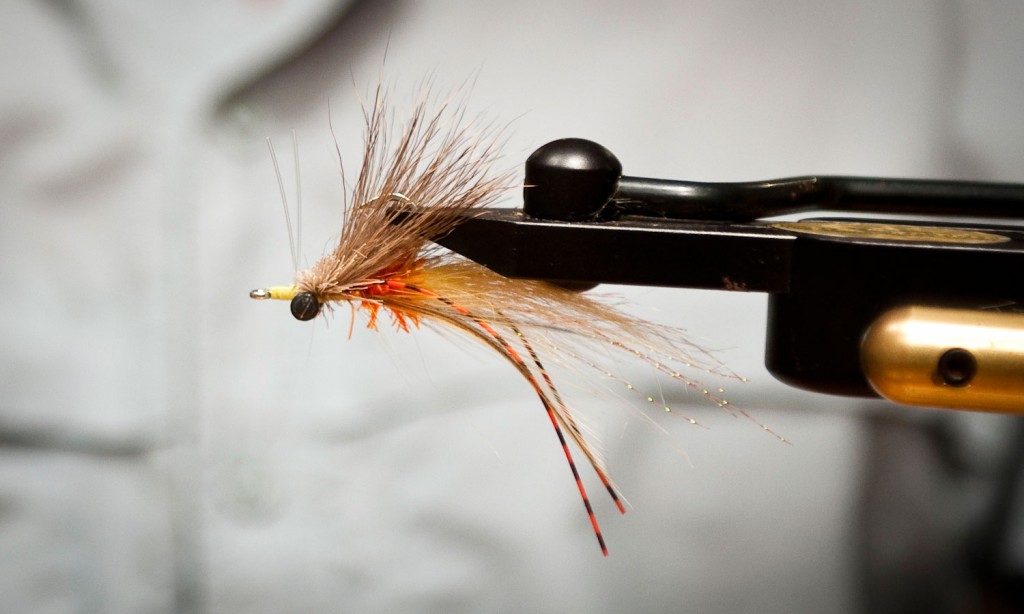
Permit fishing is as exacting as it gets.
When asked to list the top ten reasons permit will refuse a fly, Bruce Chard listed, among other things: a butterfly in Indonesia flapped its wings and because that’s what they do.
Getting a shot a a tailing permit is a test of an anglers resolve. Everything must be done perfectly. Even if everything is done perfectly there’s no guarantee of an eat. The first thing the angler must do is choose the right fly.
For tailing permit in shallow water the Chard Choker is a good choice. Check out the video to learn to tie this killer permit fly.
Read More »4 Ways To Catch More Tailwater Trout
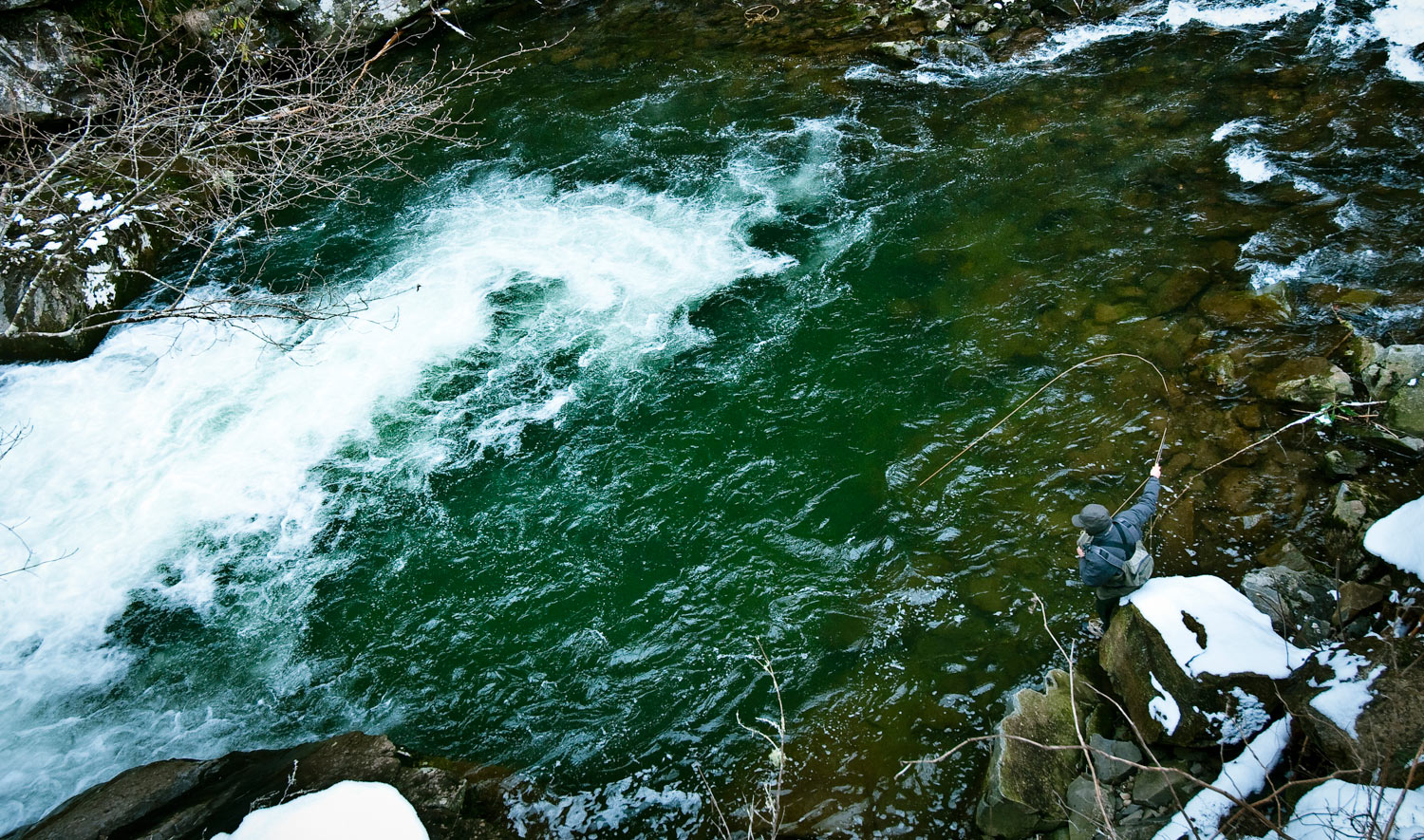
By Kyle Wilkinson
If the arrival of winter does not signal an end to your fishing, chances are good you’re going to be spending some time on a tailwater in the months to come.
While the issue of dams and rivers is clearly a topic for another day, the fact remains that dams have created some pretty incredible wintertime trout playgrounds for those willing to endure frozen fingers and guides. Aside from the fact that tailwater fisheries are known to grow incredibly large, in most places they are also known to grow incredibly intelligent trout. The reasons for this are two-fold. 1) The fish have a TON of natural food for them due to the consistent water temps and flows created by said dam. 2) Tailwaters typically receive quite a bit of angling pressure and as such, most of the trout swimming here are going to have a PhD in spotting a poor drift. Does this mean then that catching a tailwater trout or two should be a bonus, while heading home with a skunk on your back should be the norm? Absolutely not! Remember, big trout have to eat all the time to maintain their size and as such, are going to remain very catchable as long as we put the odds in our favor.
HERE ARE FOUR TIPS THAT I RELIGIOUSLY LIVE BY WHEN FISHING FOR TAILWATER TROUT. IF YOU DON’T ALREADY, PUT THESE TO USE NEXT TIME YOU HIT THE WATER AND I THINK YOU’LL BE PLEASANTLY DELIGHTED WITH THE RESULTS.
1. Tighten Up Flies. This is a big one for me and is something I promise will help put fish in the net. Do this: hold your hand out in front of you and make a fist. Now extend your thumb and pinky out in opposite directions. That distance between your two digits is the spacing to use for your flies. Depending on the size of your hands, you’re probably looking at 8-10” and this is perfect! I’m well aware this will seem very strange if you’re used to fishing your flies 18” apart (like I see people doing all the time out on the water) but I encourage you to give it a try. Remember, a tailwater trout -–particularly in the winter–is rarely going to chase down a meal. Giving that fish as many options as possible directly in front of their face is going to increase your chances of catching it dramatically!
Use Split Shot AND Putty. This is another non-negotiable for me on the technical tailwaters of Colorado. When rigging up in the morning, I’ll place one split shot 8-10” above my first fly– usually somewhere between a size 2-4. After this, I will use tungsten putty to make all my additional weight adjustments throughout the day. Using this type of putty couldn’t be easier and allows me to dial in my weight to a much greater degree than I could by pinching multiple split shots on and off my tippet throughout the day. When I come to a location that requires more weight, I’ll simply pinch off a bit of putty, flatten it between my thumb an index finger, and then roll directly on top of my split shot. Make a nice round ball and you’ll be good to go. If I realize the putty I added
Read More »Last Cast Bonefish
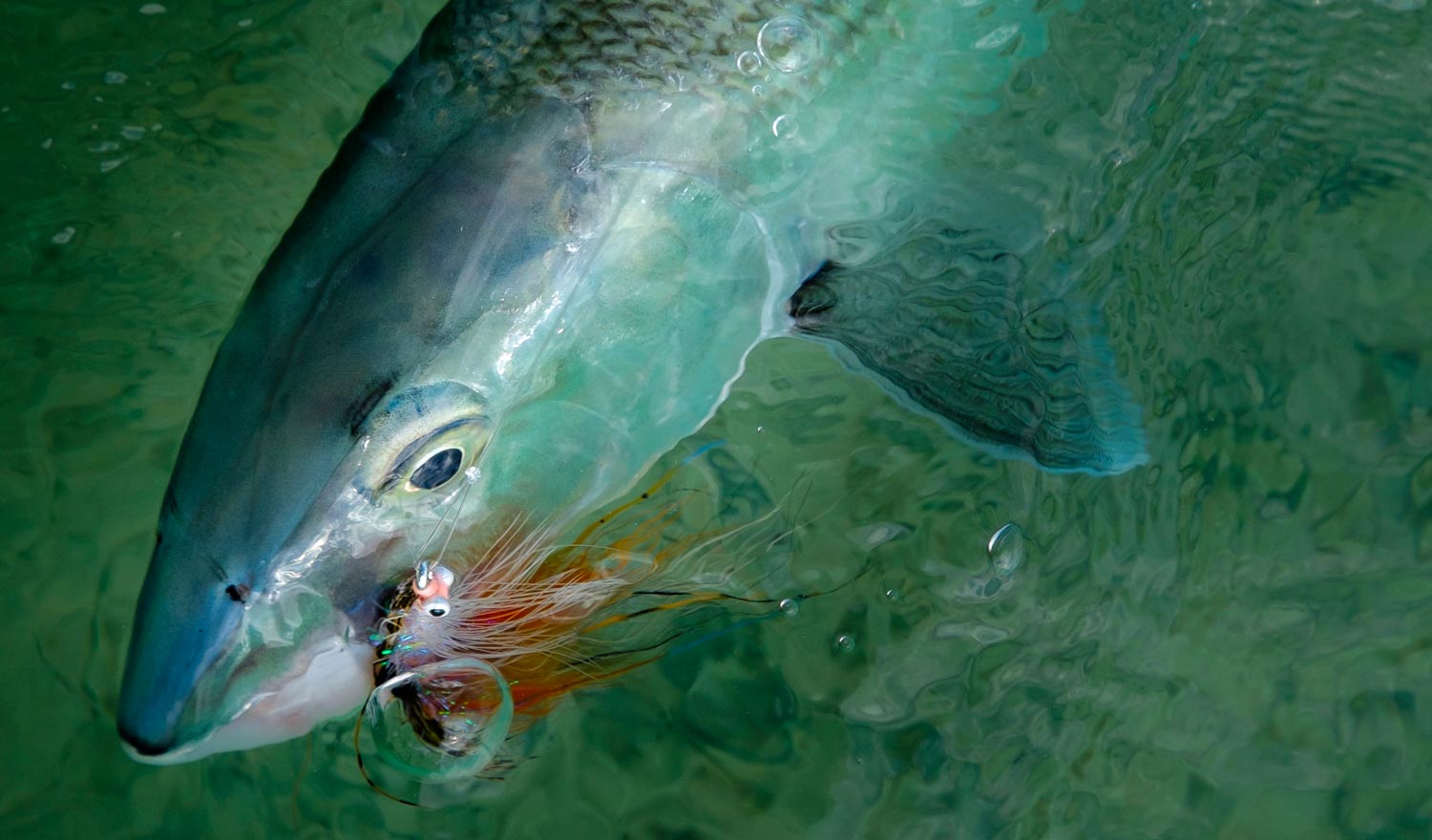
Bonefishing, for me, is the purest form of the drug.
I’m just returning from the first of three G&G Bonefish Schools in the Bahamas. This trip was more of a reunion than a school, with better than half of the anglers returning for the second or third time. I’m feeling pretty spoiled having spent a week in my favorite place, doing what I love with great friends. It’s incredibly rewarding to see these guys grow from complete beginners to really accomplished anglers.
We had a great week on South Andros. The island was spared any serious damage from hurricane Mathew and the fishery was invigorated after the storm. November is a great time for bonefishing in the Bahamas. The rains and the cooling weather bring big fish up from deep water and it’s a great time to land a trophy. This year we also had the super moon. The big tides make wade fishing scarcer but they bring out the big fish as well. We had one day of tough weather but the rest of the week was wonderful.
My friend, and G&G contributor, Owen Plair joined us on this week. A rockstar redfish guide from Beaufort, SC, this was Owen’s first time fishing the Bahamas. He was like a kid in a candy store and put his keen eyes and casting skills to work right away, landing a nice bonefish on the first cast of the trip. Several mornings, in fact, it seemed like we were on fish as quickly as we could strip our line off the reel.
Owen managed a one-in-a-million hookup on a big barracuda with his bonefish rod, while wading. The fly lodged perfectly in the corner of the cuda’s mouth and, after an aggressive fish on an eight weight, he tailed the fish expertly and, after a few photos, released it. That’s a second chance Bahamian cuda seldom see, as they are favorite table fare in spite of the risk of fish poisoning.
I love the art of targeting a hunting fish with a fly.
Read More »Catch-and-Release Practices for Small Fish
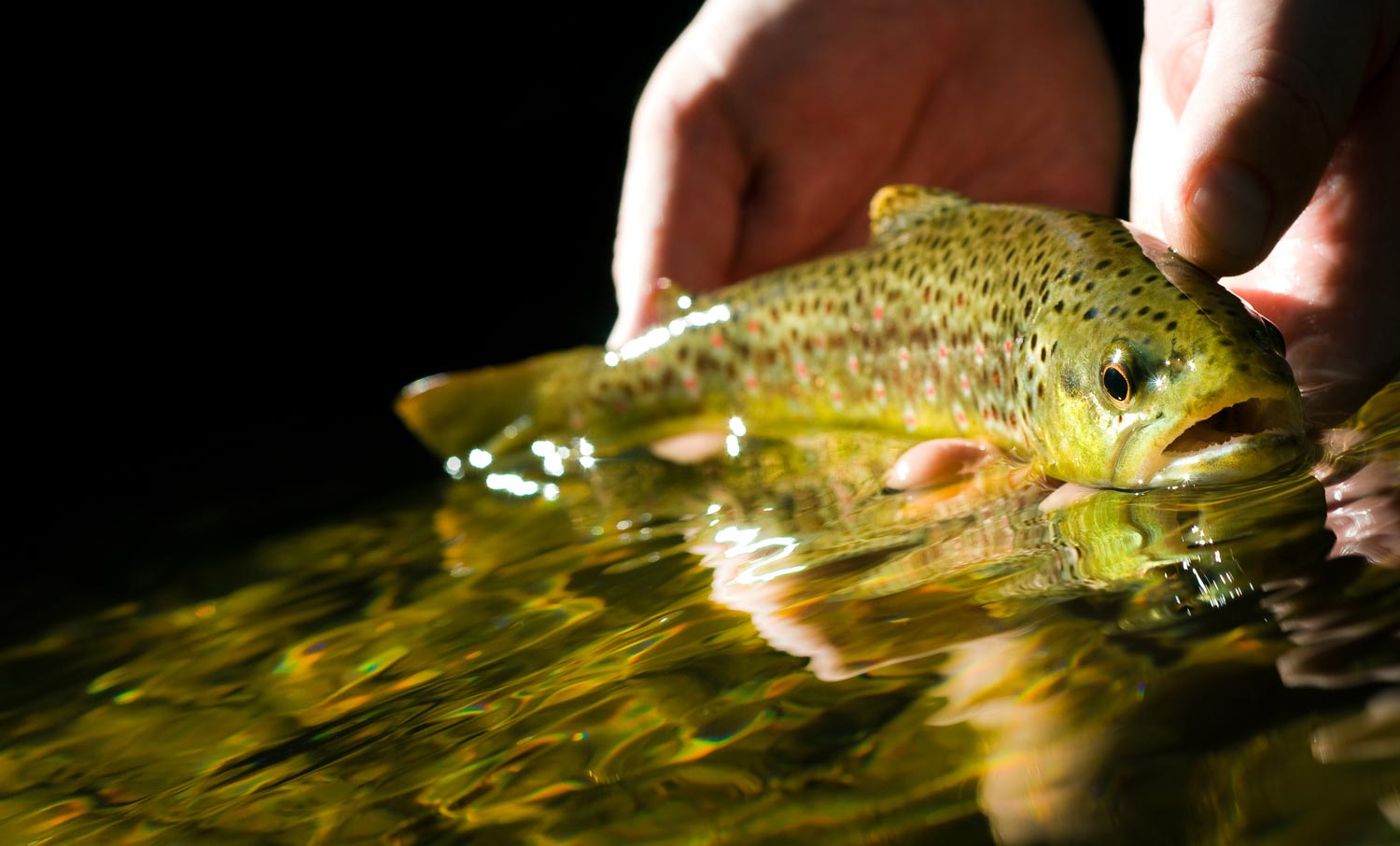
Handle the little guys with care if you want to catch them when they are big.
Catch-and-release practices among fly anglers are probably the best they have ever been. In part due to social media and the popularity of ideas like, “Keep ‘Em Wet.” More times than not, when you see a photo of someone holding a trophy size fish they have it cradled gently in the water. That’s great, but what about the little guys?
All of those trophy fish were small once and in order to get big they had to run a gauntlet of anglers and predators. Although there has certainly been improvement in the way the average angler handles fish, when I see one taking a beating, it’s usually a little guy. The thing is, these are the fish which are most vulnerable.
There are several common ways these small fish are mishandled.
The most common is time out of the water. While most anglers will net a big fish and let it rest in the net while they remove the hook, a net isn’t usually required for a small fish. Often they are simply snatched up to chest level by the leader. They are usually still pretty green so they squirm and make removing the hook a challenge and often spend way too much time out of the water.
There are a couple of other things that can go wrong when
Read More »